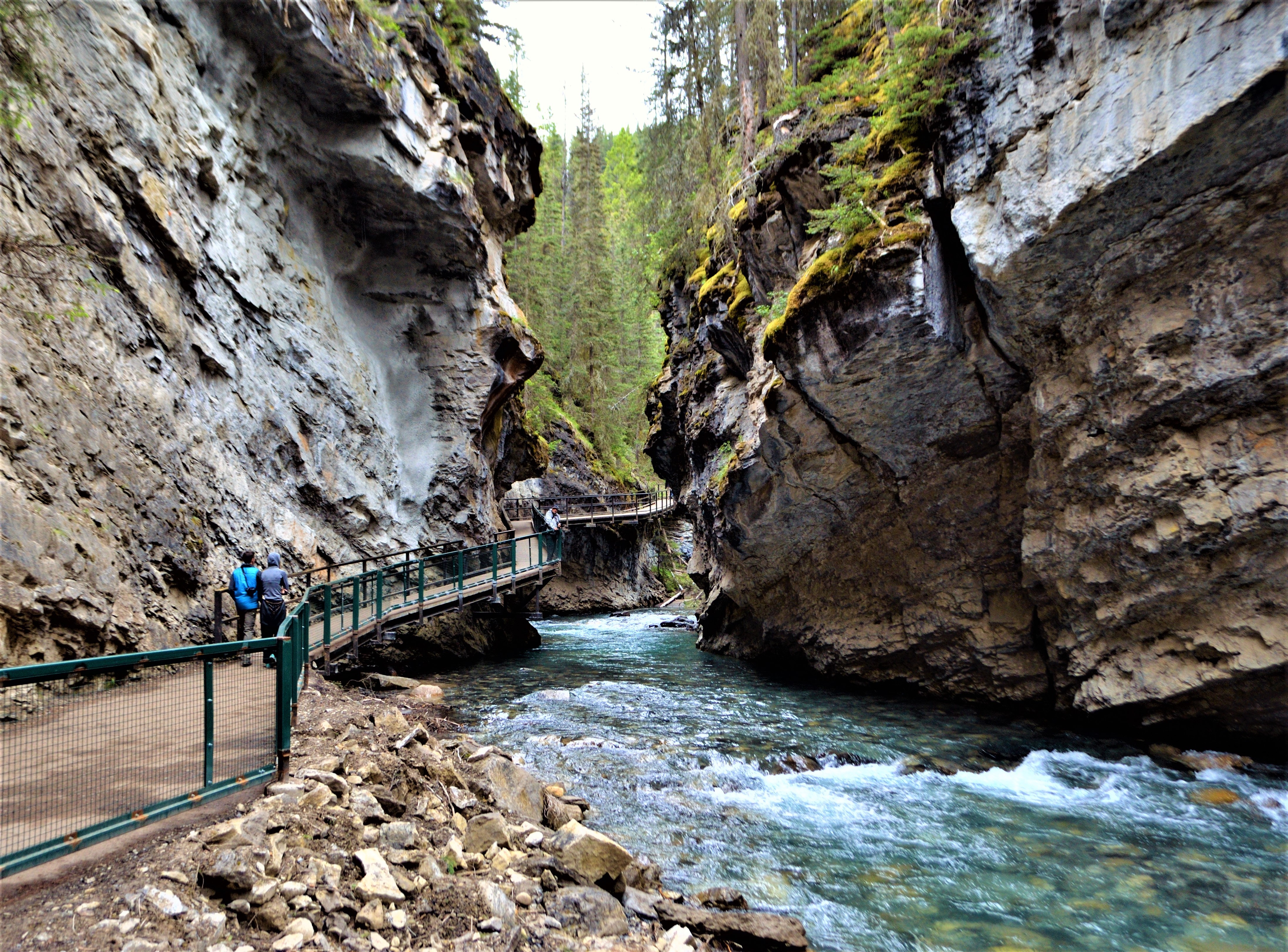
Black swifts
Banff National Park
Quick Facts
Recognized by their black plumage, streamlined body and long, curved and pointy wings. About 18cm long.
Eats flying insects.
Likes small crevices and waterfalls.
Life span of up to 16 years.
Status: Endangered.
The black swift is the largest swift in North America and is recognized by its black plumage, long and pointed wings and unique notched tail. They are often found nesting in small crevices within caverns or cliff faces near waterfalls.
They survive where very few animals can, including in canyons in Banff National Park. Despite their ability to nest in remote areas, black swift populations have declined over the past 50 years. It is estimated black swifts have faced a greater than 50% decrease in population since 1973. In 2019, the black swift was designated as an endangered species under Canada’s Species at Risk Act. Parks Canada has made the protection of this incredible species a top priority.
What is Parks Canada doing to conserve the black swifts?
Johnston Canyon provides critical nesting habitat for black swifts and is one of only two known nesting areas in Banff National Park. It is likely that black swifts will return every year to the same nesting sites in Johnston Canyon, but only if they have the space and security to nest without disruption. There are very few suitable places to nest, and we need to provide protection for these sites.
The Johnston Canyon Trail is open for visitors to experience. To balance visitation in the area with the needs of the black swifts, Parks Canada has taken the following actions:
- issued a Restricted Activity Order from May 1 – November 15 to prevent off-trail access.
- increased signs and markers reminding visitors to stay on trail, and fencing to show visitors where they can go.
- increased monitoring in the closed areas.
- increased staff on site at Johnston Canyon and online information to educate visitors.
Black Swifts and Johnston Canyon

Black swifts arrive to the Johnston Canyon area in the late spring. The canyon walls are the perfect place for black swifts to make a home.
These swifts can live upwards of 16 years. They build a small, mossy nest in a cavity in the rock face and lay just one single egg each year!
Due to the sensitive nature of black swift nesting, Parks Canada issues an annual seasonal off-trail closure at Johnston Canyon to protect the black swifts.
Help us protect black swifts by respecting closures and remaining on the trail when visiting Johnston Canyon.
What is the current status of black swifts at Johnston Canyon?
Black swifts continue to nest in the canyon. Visitors who stay on trail are contributing to this success.
2024: Four active nests. All chicks fledged their nests in September. One historically active nest site was empty for the second year in a row.
2023: Four active nests. One nest failed soon after the egg hatched, resulting in three successful nests.
2022: Four active nests. All chicks fledged from their nests in September. One historically active nest was not active in 2022.
2021: Five active nests, the highest number of active black swift nests recorded in this area since 2004.
2020: Three active nests. This was an increase from one to two active nests between 2005-2019. While the increase in nesting pairs was a positive sign for the black swift population, it is still below historical numbers: up to 12 active nests were commonly counted annually until the early 1980s.
What can you do to help?
Your actions make a difference! Visitors can contribute to the recovery of species-at-risk, including the endangered black swift by staying on designated trails, following seasonal closures in Johnston Canyon, and giving wildlife their space.
Black Swifts and their nests are protected by law:
- In Banff National Park, Black Swifts and their nests are protected by law under the National Parks Act, the Migratory Birds Convention Act, and Canada’s Species at Risk Act.
- It is illegal to disturb Black Swifts and their occupied or unoccupied nests. Violators will be charged, be required to appear in court, and could pay fines up to $25 000.
- To report Black Swift nesting activity call 403-762-1470 and a Parks Canada Resource Conservation Officer will respond.
- If you witness anyone disturbing a Black Swift and/or its nest, observe, record and report this information to Banff Emergency Dispatch 403-762-1470, anytime day or night.
More about Black Swifts:
Black swifts are aerial insectivores - they eat a special diet of flying insects. They leave their nests at dawn and can fly up to four kilometres in the air to catch flying insects. They spend most of the day catching food before returning to their nests at dusk.
Black swifts lay a single egg each year. Both black swift parents share the responsibilities of incubating the egg and collecting food for the chick, once the egg has hatched. The chick does not leave the nest until September, which is considered late compared to other bird species.
It was previously thought black swifts mate for life, but new research indicates females may change mates more frequently. Research is ongoing to better understand the complex and fascinating life of these cryptic birds.
Parks Canada ecologists continue to learn more about these endangered birds by using specialized cameras and tiny temperature sensors to better understand their habitat and nesting patterns. Winter nest surveys have been conducted after the black swifts have left to head south for the season to locate undiscovered nests at other sites and ensure they remain undisturbed. This research will help fill knowledge gaps about the Canadian black swift population and identify ways to further protect their habitat.
- Date modified :